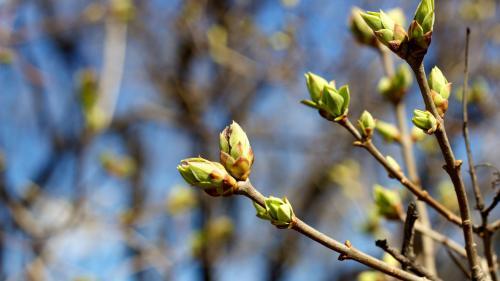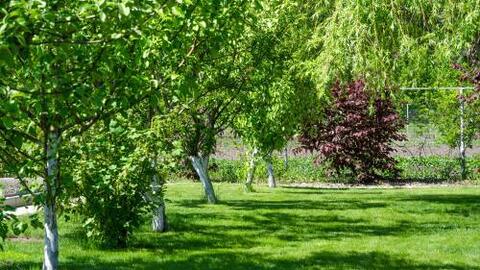Seasonal Protection Program

Preserve Plant Health During Harsh Winters
Shield your trees and shrubs from the harsh effects of weather with RTEC Treecare’s expertly applied winter protection program that works to protect plant health and their appearance.
Cold winters can severely impact your plants, causing moisture loss and unsightly browning. Preparing your plants with our winter protection program provides a complete solution designed to keep your landscaping safe and protected during the long, dormant months.
Thorough Protection Services
Our specialized program treatments offer year-round benefits to help your plants retain moisture and withstand winter’s toughest challenges.

Winter Moisture Retention Treatments
Anti-desiccant sprays form a protective barrier on leaves and needles, reducing water loss caused by cold air, sun exposure, and whipping winter winds.

Broadleaf Evergreen Preservation Services
Essential care for plants like boxwoods, rhododendrons, and hollies, helps them maintain health and beauty through the harsh winter conditions.

Seasonal Anti-Desiccant Applications
Custom applications are carefully timed to protect plants during critical periods, preventing damage without interfering with their natural dormancy.

Expert Arborist Application Methods
Our team of certified arborists uses precise techniques and high-quality products to give your plants the best possible protection.
Summer Stress Reduction
Protect Your Landscape from Summer Stress
Summer brings more than just sunshine—it brings heatwaves, drought, compacted soils, and an uptick in pests and disease. These seasonal stressors weaken your trees and shrubs, often leading to long-term damage you can’t always see.
That’s why we created the Summer Stress Reduction treatment—a science-backed, eco-conscious treatment that gives your landscape the underground support it needs to stay strong, resilient, and vibrant all summer long.
What is it? Why does it work?
Our biostimulants act as powerful multivitamins for your plants, delivering essential nutrients to help improve root development, strengthen resilience against stress, and promote lush, healthy growth.
Unlike synthetic fertilizers, Summer Stress Reduction doesn’t just feed your plants—it rebuilds the ecosystem under your feet. By stimulating beneficial microbial activity, this program enriches soil health naturally while giving trees and shrubs the tools they need to weather summer’s extremes.
Apply April – Early July for maximum protection and visible results by late season.


Benefits Of Winter Protection Treatments
Enjoy healthier plants and a more beautiful landscape with our professionally applied winter protection solutions.
- Protect Against Moisture Loss: Creates a barrier that prevents excessive water loss through leaves and needles, keeping plants hydrated even during freezing conditions.
- Encourage Vibrant Spring Growth: Protecting plants during the winter helps them remain at their best, allowing for strong and vibrant growth as temperatures rise.
- Prevent Winter Damage to Plants: Guards your shrubs and trees from drying effects caused by cold winds, strong sunlight, and road salt used during the snow-clearing process.
- Customized Solutions for Your Landscape: Each winter protection application is carefully customized to the specific needs of your plants, delivering comprehensive and effective care for all species.

Schedule Your Winter Protection Treatment Today
Prepare your plants for winter with professional winter protection services from RTEC Treecare designed to protect their health and beauty. Contact our team today to protect your landscape and enjoy vibrant results come the spring.
Reviews From Our Clients

4.9 of 5 based on 245 reviews












